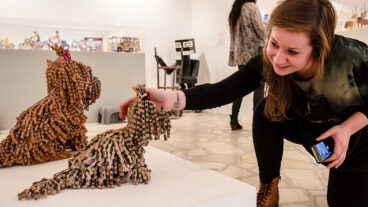Patients don’t know whether the doctor who saved their lives is Jewish or Arab.This column is being written literally from the bottom of my heart. That is where I had a cardiac episode that culminated in open-heart surgery – triple bypass.
The operation was performed by Dr. Ehud Ranani, head of the cardiac surgery department at the incomparable Chaim Sheba Medical Center, a government hospital where competence and efficiency are legendary.
Dr. Ranani perfected his technique during a two-year clinical fellowship at Toronto General Hospital under the tutelage of Dr. Tirone David.
The superb medical treatment I received gave me an inside look at what really makes Israel tick.
It introduced me to the ethnic and religious mosaic of which its staff is composed: Jews and Arabs, native-born ‘Sabras’ and recent arrivals from the former Soviet Union, colleagues from neighboring countries, such as Greece and Cyprus and former Ethiopians who emigrated en masse in Operations Moses and Solomon.
They have some amazing characteristics. No matter how complicated and mind-boggling the paraphernalia of modern medicine may be, they master it and incorporate it into their constantly-upgraded systems.
For example, every procedure is computerized and every treatment, prescription and diagnosis recorded instantly by doctors and nurses to make sure there is precise continuity in their methodology.
One unique feature of Tel Hashomer, as this former British military hospital is popularly called, is its cardiac intensive care unit. Conceived and directed by Dr. Hanoch Hod, it prepares patients for the sophisticated procedures in store for them from the installation of pacemakers to delicate repairs of the heart.
There are only two setups like it in the world, one in California and one in Western Europe.
Towards the end of my stay, Dr. Hod took time out to conduct an international conference which began in Israel and continued in Spain during which he elaborated on his original concept and suggested ways it could be emulated abroad.
But the outstanding impression made on me by his tireless team of nurses was the extent to which its Arab and Jewish personnel were integrated. In many instances it was impossible to pinpoint their ethnic origin, not by their looks, Arabic accent (they have none) or gestures.
One of them told of his frequent trips to neighboring Egypt, once a favorite destination for Israeli Arabs, a country where their language and religious background are dominant. As far as the Egyptians are concerned, he said, we are Israelis. They refuse to differentiate between us and our Jewish friends.
Another male nurse, also an Israeli Arab, said he loves to read the legal reports published in the ultra-liberal daily Ha’aretz because the Hebrew language is outstanding in its ability to express the fine points of cases brought to court.
It goes without saying that patients have no way of knowing whether the skilled medical hands which may have saved their lives belonged to Israeli Jews or Israeli Arabs. That is the way it is at Tel Hashomer and that is the way it is at Jerusalem’s Hadassah, Haifa’s Rambam or any of the other hospitals in this country.
In reality, these medical institutions can and should be held up as models of genuine Jewish-Arab coexistence (and of Israeli-Palestinian coexistence prior to the senseless terrorism that tore the latter two communities apart).
When the bi-national relationship is based on mutual respect and professional esteem, when members of these nationalities work side by side for a common goal – especially a humanitarian one – life-saving miracles are accomplished.
It is a much more promising and hopeful basis for true peace than the creation of a separate and potentially revanchist Palestinian state as advocated in the much-touted two-state solution, which is not a solution at all.
(Originally appeared in the Toronto Sun)












